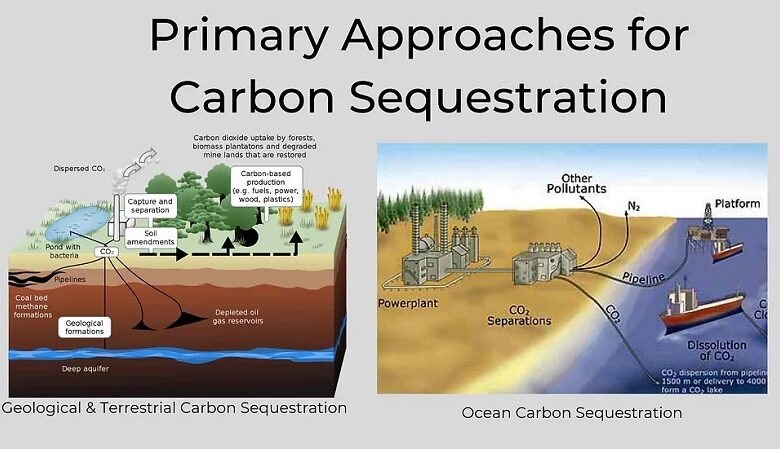Harnessing Oceanic Potential: Combatting Climate Change Through Carbon Sequestration

News Mania desk/Agnibeena Ghosh/29th April 2024
For decades, the Earth’s oceans have played a crucial role in mitigating the impacts of global warming by absorbing a significant portion of the carbon dioxide emitted into the atmosphere since the onset of the Industrial Revolution. Now, as climate models indicate a narrowing window for curtailing warming through carbon emissions reduction alone, scientists are exploring innovative strategies to enlist the ocean in a more active role in carbon uptake and storage, recognizing it as a key ally in combating climate change.
The Earth is projected to warm by approximately 3.2 degrees Celsius by the end of the century, according to the Intergovernmental Panel on Climate Change (IPCC). Even if nations fulfill their current commitments to reducing emissions, global temperatures are still expected to rise by around 2.7 degrees Celsius, exceeding the targets outlined in the 2015 Paris Agreement. As each incremental increase in temperature amplifies the risk of catastrophic events such as heatwaves, storms, and sea-level rise, urgent action is imperative.
In response to these challenges, scientists are advocating for the adoption of carbon dioxide removal (CDR) technologies to supplement emission reduction efforts. However, current CDR methods, primarily land-based approaches such as afforestation and improved forest management, are insufficient to meet the ambitious targets outlined in the Paris Agreement. To bridge this gap, experts are turning their attention to the ocean, recognizing its immense capacity for carbon storage as a promising solution.
Enhancing the ocean’s carbon uptake capabilities entails various approaches, including bolstering the abundance of photosynthesizing organisms, augmenting water alkalinity to facilitate CO2 absorption, and deploying large-scale carbon capture facilities at sea. While these strategies hold considerable potential, they are relatively untested and pose significant challenges.
The dynamic nature of oceanic systems presents formidable obstacles to monitoring and evaluating the effectiveness of CDR initiatives. Limited baseline data and inadequate observational technologies further compound these challenges, necessitating concerted research efforts to better understand the complex interactions within marine ecosystems.
Moreover, concerns regarding potential environmental impacts, such as alterations to regional water properties and disruption of marine food webs, underscore the need for cautious implementation and thorough risk assessment. Despite these challenges, scientists are racing against time to develop and deploy ocean-based CDR solutions before the consequences of climate change escalate further.
The urgency of addressing climate change is underscored by the persistent threat posed by atmospheric carbon dioxide, which can linger for centuries before being naturally sequestered. Given the sluggish pace of natural carbon sinks, CDR technologies offer a means of accelerating the removal of CO2 from the atmosphere, akin to a “time machine” that can reset atmospheric carbon levels to earlier, less alarming concentrations.
For instance, large-scale afforestation efforts and direct air capture facilities have the potential to significantly offset carbon emissions, albeit on a limited scale. However, the ocean’s innate ability to absorb carbon represents a vast reservoir for storing atmospheric CO2. Currently, the ocean absorbs approximately a quarter of global carbon emissions annually, equivalent to rolling back the atmospheric clock by about three months each year.
The historical record further underscores the ocean’s pivotal role in carbon regulation, with vast quantities of CO2 stored within its depths during periods of lower atmospheric concentration. Leveraging the ocean’s capacity for carbon sequestration presents a promising avenue for mitigating climate change and averting its most dire consequences. As scientists continue to explore and refine ocean-based CDR technologies, the ocean emerges as a critical ally in humanity’s collective effort to safeguard the planet’s future.






